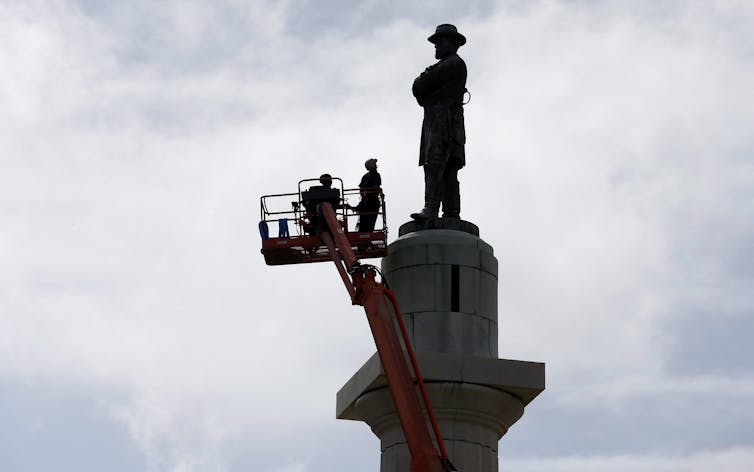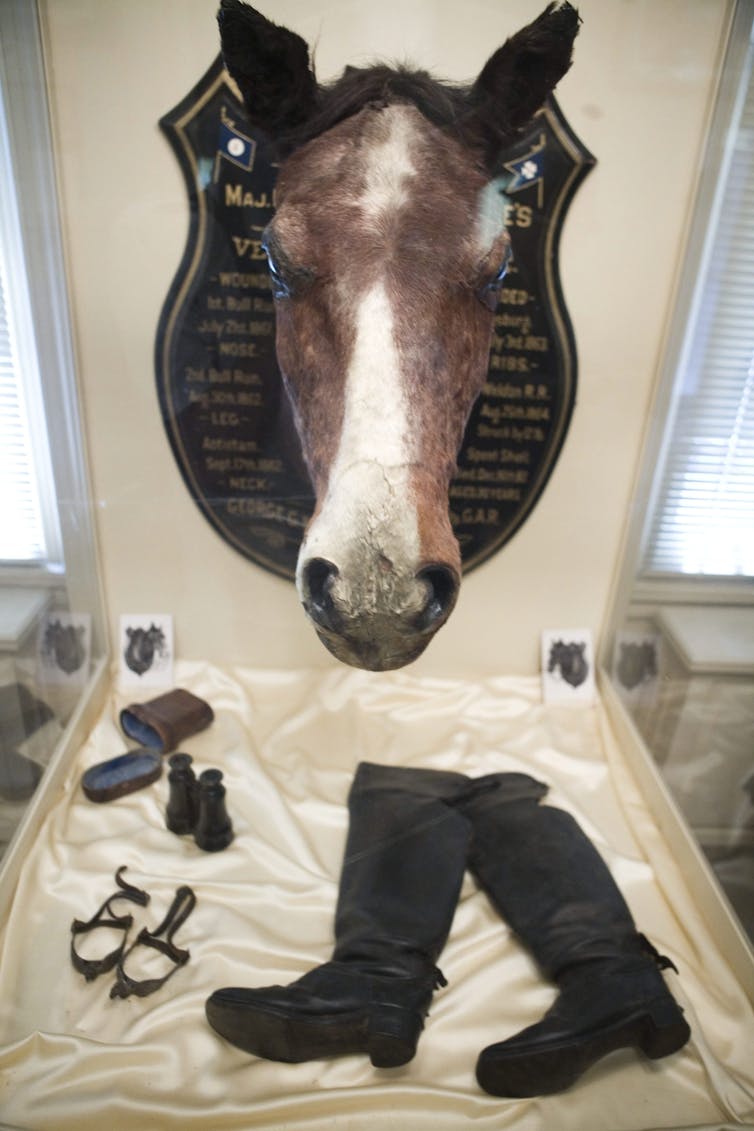Reading time: 5 minutes
The Battle of Gettysburg was a turning point in the American Civil War, and Gen. George Pickett’s infantry charge on July 3, 1863, was the battle’s climax. Had the Confederate Army won, it could have continued its invasion of Union territory. Instead, the charge was repelled with heavy losses. This forced the Confederates to retreat south and end their summer campaign.
By Michael J. Armstrong, Brock University
Pickett’s Charge consequently became known as the Confederate “high water mark.” Countless books and movies tell its story. Tourists visit the battlefield, re-enactors refight the battle and Civil War roundtable groups discuss it. It still reverberates in ongoing American controversies over leaders statues, Confederate flags and civil rights.

Why did the charge fail? Could it have worked if the commanders had made different decisions? Did the Confederate infantry pull back too soon? Should Gen. Robert E. Lee have put more soldiers into the charge? What if his staff had supplied more ammunition for the preceding artillery barrage? Was Gen. George Meade overly cautious in deploying his Union Army?
Politicians and generals began debating those questions as soon as the battle ended. Historians and history buffs continue to do so today.
Data from conflict used to build model
That debate was the starting point for research I conducted with military historian Steven Sondergren at Norwich University. (A grant from Fulbright Canada funded my stay at Norwich.) We used computer software to build a mathematical model of the charge. The model estimated the casualties and survivors on each side, given their starting strengths.
We used data from the actual conflict to calibrate the model’s equations. This ensured they initially recreated the historical results. We then adjusted the equations to represent changes in the charge, to see how those affected the outcome. This allowed us to experiment mathematically with several different alternatives.
The first factor we examined was the Confederate retreat. About half the charging infantry had become casualties before the rest pulled back. Should they have kept fighting instead? If they had, our model calculated that they all would have become casualties too. By contrast, the defending Union soldiers would have suffered only slightly higher losses. The charge simply didn’t include enough Confederate soldiers to win. They were wise to retreat when they did.
We next evaluated how many soldiers the Confederate charge would have needed to succeed. Lee put nine infantry brigades, more than 10,000 men, in the charge. He kept five more brigades back in reserve. If he had put most of those reserves into the charge, our model estimated it would have captured the Union position. But then Lee would have had insufficient fresh troops left to take advantage of that success.
Ammunition ran out
We also looked at the Confederate artillery barrage. Contrary to plans, their cannons ran short of ammunition due to a mix-up with their supply wagons. If their generals had better coordinated those supplies, the cannons could have fired twice as much. Our model calculated that this improved barrage would have been like adding one more infantry brigade to the charge. That is, the supply mix-up hurt the Confederate attack, but was not decisive by itself.
Finally, we considered the Union Army. After the battle, critics complained that Meade had focused too much on preparing his defences. This made it harder to launch a counter-attack later. However, our model estimated that if he had put even one less infantry brigade in his defensive line, the Confederate charge probably would have succeeded. This suggests Meade was correct to emphasize his defense.

Pickett’s Charge was not the only controversial part of Gettysburg. Two days earlier, Confederate Gen. Richard Ewell decided against attacking Union soldiers on Culp’s Hill. He instead waited for his infantry and artillery reinforcements. By the time they arrived, however, it was too late to attack the hill.
Was Ewell’s Gettysburg decision actually wise?
Ewell was on the receiving end of a lot of criticism for missing that opportunity. Capturing the hill would have given the Confederates a much stronger position on the battlefield. However, a failed attack could have crippled Ewell’s units. Either result could have altered the rest of the battle.
A study at the U.S. Military Academy used a more complex computer simulation to estimate the outcome if Ewell had attacked. The simulation indicated that an assault using only his existing infantry would have failed with heavy casualties. By contrast, an assault that also included his later-arriving artillery would have succeeded. Thus, Ewell made a wise decision for his situation.
Both of these Gettysburg studies used mathematics and computers to address historical questions. This blend of science and humanities revealed insights that neither specialty could have uncovered on its own.
That interdisciplinary approach is characteristic of “digital humanities” research more broadly. In some of that research, scholars use software to analyze conventional movies and books. Other researchers study digital media, like computer games and web blogs, where the software instead supports the creative process.
This article was originally published in The Conversation.
Podcasts about the Battle of Gettysburg:
Articles you may also like:

The 5 Biggest Financial Bubbles You’ve Never Heard Of
With the prophets of doom foretelling that we’ll see massive inflation in 2021 and the crash of cryptocurrency (though it may have risen and crashed again five times by the time you read this), looking at the financial bubbles of the past has become popular again. People are talking about Tulipmania, the 2008 recession and […]

The USAAF 49th Fighter Group over Darwin: a forgotten campaign – Video
The prelude to the campaign of the 49th Fighter Group covers some of the darkest days of the Pacific War: the fall of Singapore on 15 February; the bombing of Darwin on 19 February during which the Japanese shot down nine of the ten P-40s of Major Floyd Pell’s 33rd Pursuit Squadron; and the sinking […]
The text of this article is republished from The Conversation in accordance with their republishing policy and is licenced under a Creative Commons — Attribution/No derivatives license.









